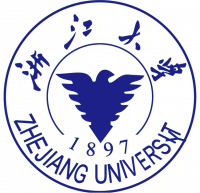Exploiting correlated molecular-dynamics networks to counteract enzyme activity–stability trade-off
2018
期刊
Proceedings of the National Academy of Sciences
下载全文
The directed evolution of enzymes for improved activity or substrate specificity commonly leads to a trade-off in stability. We have identified an activity–stability trade-off and a loss in unfolding cooperativity for a variant (3M) of Escherichia coli transketolase (TK) engineered to accept aromatic substrates. Molecular dynamics simulations of 3M revealed increased flexibility in several interconnected active-site regions that also form part of the dimer interface. Mutating the newly flexible active-site residues to regain stability risked losing the new activity. We hypothesized that stabilizing mutations could be targeted to residues outside of the active site, whose dynamics were correlated with the newly flexible active-site residues. We previously stabilized WT TK by targeting mutations to highly flexible regions. These regions were much less flexible in 3M and would not have been selected a priori as targets using the same strategy based on flexibility alone. However, their dynamics were highly correlated with the newly flexible active-site regions of 3M. Introducing the previous mutations into 3M reestablished the WT level of stability and unfolding cooperativity, giving a 10.8-fold improved half-life at 55 °C, and increased midpoint and aggregation onset temperatures by 3 °C and 4.3 °C, respectively. Even the activity toward aromatic aldehydes increased up to threefold. Molecular dynamics simulations confirmed that the mutations rigidified the active-site via the correlated network. This work provides insights into the impact of rigidifying mutations within highly correlated dynamic networks that could also be useful for developing improved computational protein engineering strategies.
- 卷 115
- 期 52
- 页码 E12192-E12200
- Proceedings of the National Academy of Sciences
- ISSN: 0027-8424
- DOI: 10.1073/pnas.1812204115
